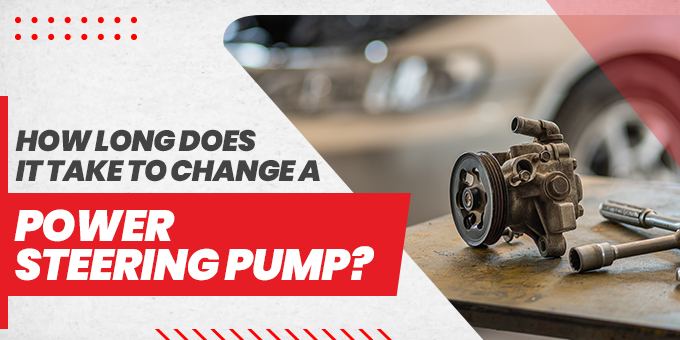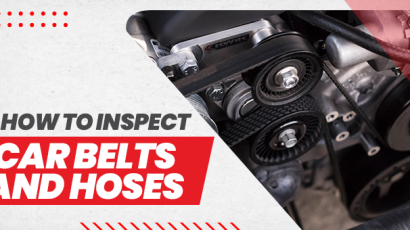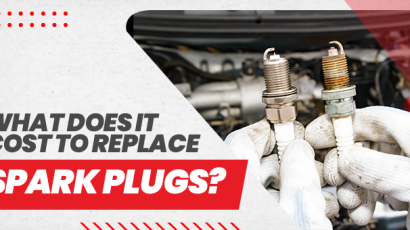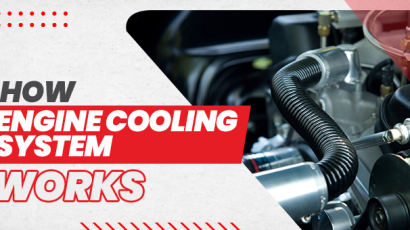
One of the frequently asked questions from car owners is, “How long does it take to change a power steering pump?” It is an important question to consider because one wants to know how long will the car be unusable. Furthermore, if your car’s power steering pump stops working, you will have difficulty driving your car, and there can be a severe risk to your person.
There are numerous vehicles with a variety of models, engine options, and so on. So, to get the best answer, you must consider all these factors as well. Additionally, it also depends on how easily accessible the pump is in your car. So, depending on the stated factors, it can take 2-5 hours to change a power steering pump.
It is recommended that car drivers get help from a mechanic for inspections and resolution of the problem in most cases. However, a mechanic can be costly as they charge a greater price to replace the faulty part or rebuild the power steering pump. Surprisingly, you can replace the power steering pump yourself with some basic knowledge and the right tools.
Can I Replace My Power Steering Pump?
Yes, you can change your car’s power steering pump. But you don’t know how to do it or which tools to use. No worries at all, because this blog will explain how to change a power steering pump.
How to Change a Power Steering Pump?
In order to reach the pump mounting bolts and hoses, some cars require the removal of other engine components. These additional components are in addition to the drive belt, supply, return hoses or pipes, pump, and mounting bolts.
It can be difficult to remove and reattach the hoses correctly without creating leaks. It can be the case for vars that require replacement fittings every time the hoses are disconnected.
As part of the replacement work, you’ll need to properly refill the pump and bleed (remove old fluid and air) the system. If you don’t have experience with such repairs, it can take a bit longer than usual on your first attempt.
First, make sure you have all of the essential fluids by reading the workshop manual. A decent rule of thumb is to double the system’s capacity to ensure some extra fluid on hand in case of bleeding. However, the “O” rings (for hose connections) with fluid resistance are mostly available with the components in the case of new power steerings.
A small torque wrench is necessary for the mounting bolts, and excellent quality flare spanners are required for the two hose or pipe connections. It is recommended that you use ratcheting spanners to reduce the danger of rounding off the fittings or springing the spanner jaws. It also simplifies the task to a greater extent.
If the pump is placed on the engine block or cylinder head, specific thread sealants may be required to prevent oil and/or coolant leaks. Along with coolant corrosion of the mounting bolt threads. Similarly, special power steering-resistant sealant may be applied to the hose connection threads to prevent fluid leaks.
So, this was how you could change your power steering pump on your own. If you’re still confused, then reach out to a trusted mechanic to do the appropriate repairs.
There are some other relevant Frequently Asked Questions that we would like to answer just in case. In addition, it will give you further information on repairs and why it is necessary to replace your power steering pump in case of malfunctions.
FAQs About Changing a Power Steering Pump:
How can a power steering pump get damaged?
A power steering pump can get damaged due to several reasons. First, continued strain due to a lack of proper steering fluid level can lead to premature failure. When that happens, you can notice a noise while turning the wheel. It shows that your steering pump is damaged and will fail soon. Furthermore, heat and dry friction can be causes of the power steering pump getting damaged.
Is it possible to drive with a bad power steering pump?
No, it is not recommended that you drive with a bad power steering pump. If you continue to do so, the pump and the drive belt will be irreparably damaged.
Is it possible to repair a power steering pump?
Yes, it is possible to repair a power steering pump. However, the cost of repairs is high, and the repaired pump does not work at the same capacity as before. Therefore, the pump may become more susceptible to failure. It can also indirectly damage your power steering rack. So, it is best to change a power steering pump to avoid future costs and further damage to your car. Your safety should be your first priority.
What is the life expectancy of a whiny power steering pump?
Interestingly, there is no life expectancy of a whiny power steering pump. However, timely maintenance and safe use can increase its life expectancy and align it with the lifespan of your car. Unfortunately, based on facts, they usually require replacement after 100,000 miles.
How to detect the presence of air pockets in a power steering pump?
To check for the presence of air in the power steering system, one needs to observe the sounds. For example, if it sounds like an irritated cat lurks beneath the hood, it becomes louder during hard twists and turns. Then there is a greater chance that air is present in the system.
Final Thoughts:
It is hoped that you have gotten the answer to the question that “How long does it take to change a power steering pump.” The most accurate answer can only be possible when one has key knowledge of the car, which requires power steering pump repair or replacement.











